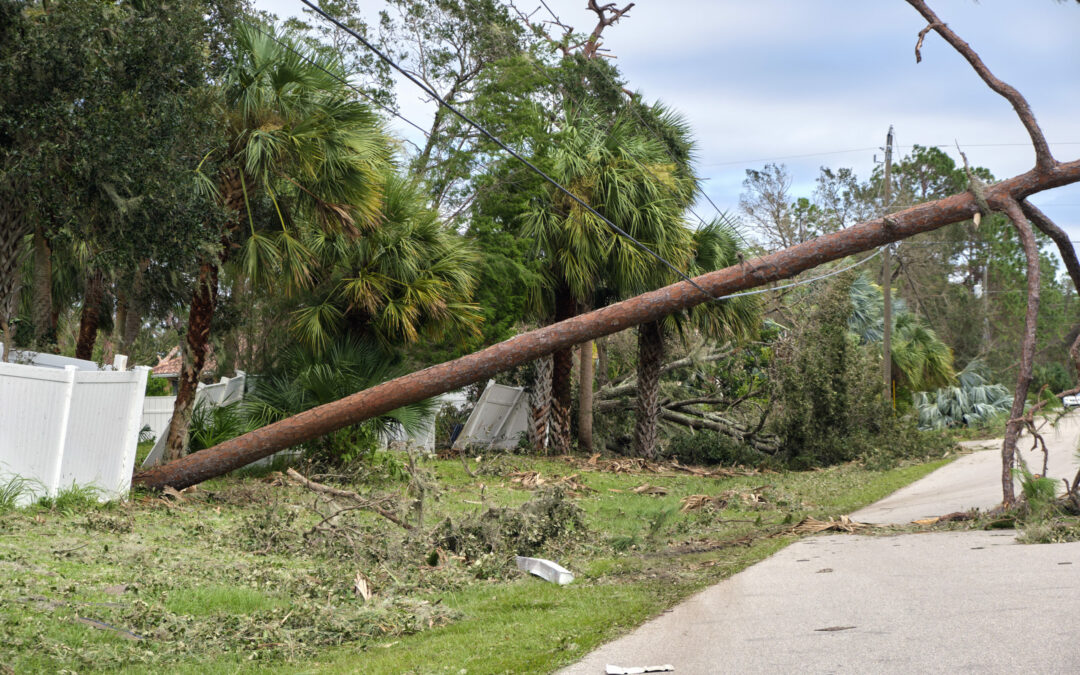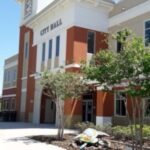January 19, 2023 – Flagler County Emergency Management Director Jonathan Lord was invited to address the Florida House Select Committee today (January 19) on hurricane resiliency and recovery as part of a panel discussion that also includes representatives Lee, Charlotte, Collier, and Volusia counties – all of which suffered impacts from either or both hurricanes Ian and Nicole.
“I am honored to represent Flagler County at this panel discussion with the House Select Committee,” Lord said. “Hurricane resiliency and recovery is critical for our community as there have been repeated impacts over the past decade, beginning with Hurricane Matthew, that have left a significant mark that effects our residents, our businesses, and our infrastructure.”
Lord outlined the challenges for Flagler County – managing the demands of responsible growth and expansion of governmental services, as well as dealing with the physical, emotional, and financial impacts of multiple hurricanes, tropical storms, and other significant weather events that damage its fragile protective coastal dune system – and offered suggestions for helpful measures the Florida House can consider supporting.
He spoke of the estimated damages of each storm.
Hurricane Ian, which brought with it an average of more than 15 inches of rain and historic flooding to the western reaches of the county and coastal erosion on the barrier island, caused an estimated $11 million in residential and business damages and an additional $6 million in local governmental expenditures. These figures do not include the damages to Flagler’s 18 miles of beaches and dune system.
Nicole, which battered areas with Ian-weakened infrastructure fewer than six weeks afterward, is estimated to have caused about $29 million in residential and business damages and an additional $6 million in local governmental expenditures. Again, these estimates do not include damages to the beaches and dune system.
Lord noted, importantly, that both the dunes and State Road A1A serve as critical infrastructure that protects homes and businesses and are a key economic driver. He thanked the state for proactive funding through the Florida Department of Environmental Protection to support dune restoration in coastal communities.
“Your continued support and ongoing funding of this partnership between local, state, and federal agencies is critical to ensuring that communities such as ours can protect our infrastructure, residents, and businesses from future coastal storms,” Lord said. “Even though local governments lead and manage their own disaster response and recovery, there is not a single County in Florida that can respond to a significant disaster without the support of its neighbors … Additionally, the support offered by state and federal agencies is just as important when our communities address the impacts from disasters.”
Lord asked the Florida House for the following:
- Emergency Management Preparedness Assistance and Trust Fund – increase what is provided to all counties for planning, training, personnel costs, equipment, and Emergency Management operations from $105,806 to $150,000.
- Legislative support and expansion of the State Chief Financial Officer’s “My Safe Florida Program” that provides free wind mitigation home inspections to identify activities that can be undertaken by the homeowner to make their homes more resilient from wind damage, particularly from hurricanes. Also, expand the second part of the program that provides grants to offset costs of wind mitigation improvements, such as hurricane shutters.
- Build on the FEMA mitigation program that allows homeowners in flood prone areas to either elevate their homes or potentially sell them to local governmental agencies to be returned to open space that can possibly absorb floodwaters to protect neighboring structures. The ask is to shift the grant and project management from local government to the Florida Division of Emergency Management, using federal funds, to prevent burdening local taxpayers with managerial expenses for the grants.
- Hurricane Loss Mitigation Program funded through the Florida Hurricane Catastrophe Fund to construct or retrofit shelters – switch the prioritization from “regional planning council regions” with shelter deficits to “counties” with shelter deficits. Also, double the $3 million statewide allocation and continue funding.
- Prevent legislation that would weaken the wind and flood protection portions of Florida’s Building Code.
- Expand Public Records exemption protection to post-disaster after-action reports to encourage more honest discussions to be held between the agencies and organizations involved in disaster response.
- Encourage the Florida Division of Emergency Management to continue developing “recovery forms” and disaster contracting language templates that will support local governments and non-profits involved in disaster response as they navigate FEMA programs – not as a mandate but to be used as tool when applicable.
“I am honored to have been asked to speak with you and excited that our legislature prioritizes improving disaster recovery and resiliency in our state,” Lord concluded.
Follow Flagler County Government on Facebook: www.facebook.com/FlaglerCountyGovernment.
Follow Flagler County Emergency Management on Facebook, Twitter, and Instagram: @FlaglerEOC.










